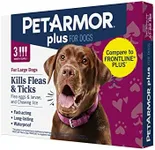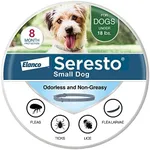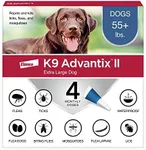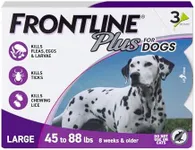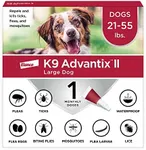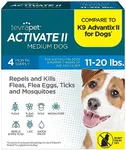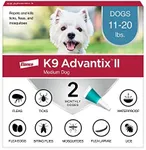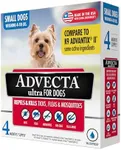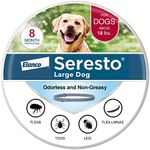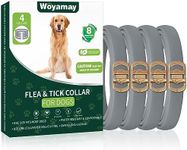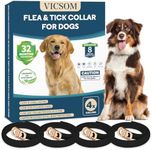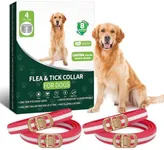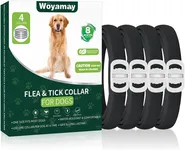Buying Guide for the Best Dog Flea Treatments
Choosing the right flea treatment for your dog is crucial for their health and comfort. Fleas can cause itching, allergic reactions, and even transmit diseases. With a variety of products available, it's important to understand the key specifications to make an informed decision. Here are the main factors to consider when selecting a flea treatment for your dog.Type of TreatmentFlea treatments come in various forms such as topical treatments, oral medications, collars, and shampoos. Topical treatments are applied directly to the dog's skin and are effective for about a month. Oral medications are ingested and can provide protection for up to three months. Flea collars release chemicals that repel fleas and can last several months. Shampoos provide immediate relief but need to be used frequently. Choose the type based on your dog's lifestyle and your convenience.
Active IngredientsThe active ingredients in flea treatments are what kill or repel fleas. Common ingredients include fipronil, imidacloprid, and permethrin. It's important to know which ingredients are safe for your dog, especially if they have any allergies or sensitivities. Some ingredients are also toxic to cats, so if you have both cats and dogs, choose a product that is safe for both. Consult your vet to determine the best active ingredient for your dog's specific needs.
Age and Weight of DogFlea treatments are often formulated based on the age and weight of the dog. Puppies and small dogs require different dosages compared to adult or larger dogs. Using the wrong dosage can be ineffective or even harmful. Always check the product label for the recommended age and weight range to ensure you are using the correct treatment for your dog.
Duration of EffectivenessDifferent flea treatments offer varying durations of effectiveness. Some treatments need to be applied monthly, while others can last up to three months or more. Consider how often you are willing to administer the treatment and choose a product that fits your schedule. Longer-lasting treatments may be more convenient but ensure they provide continuous protection throughout their duration.
Spectrum of ProtectionSome flea treatments also protect against other parasites such as ticks, lice, and mites. If your dog is at risk of multiple types of parasites, a broad-spectrum treatment might be more suitable. Check the product label to see what other pests it protects against and choose one that covers all the parasites your dog is likely to encounter.
Ease of ApplicationThe ease of applying the flea treatment can be a significant factor, especially if your dog is not cooperative. Topical treatments and collars are generally easier to apply, while oral medications require your dog to swallow a pill. Shampoos require bathing, which can be time-consuming. Consider your dog's temperament and your own ability to administer the treatment when making your choice.
Safety and Side EffectsSafety is paramount when choosing a flea treatment. Some treatments can cause side effects such as skin irritation, vomiting, or lethargy. Research the potential side effects of each product and consult your vet if you have any concerns. It's also important to follow the instructions carefully to minimize the risk of adverse reactions.
